Project management is the art and science of turning ideas into reality. It drives projects’ success and direction, ensuring all components and relevant stakeholders align.
Yet, the role of a project manager can feel like a balancing act, with countless tasks to juggle, deadlines to meet, and team dynamics to handle. In fact, 52% of project managers oversee two to five projects simultaneously.
Managing multiple projects and team members is not easy, but we’ve got you covered. This article includes ten project management best practices to help you achieve project success.
10 best practices for project management
Project management not only guides the start of a project but also helps ensure you finish it strong.
Here are 10 tried-and-true project management practices that effective project managers live by:
1. Hold a kickoff meeting
It’s important to create an environment of transparency and collaboration upfront with a kickoff meeting. This meeting is more than a formality — it sets the tone for the entire project.
Make sure everyone involved starts with the same understanding and vision of the project. Introduce and align all stakeholders, from clients to project team members.
The kickoff is also an opportunity to clarify everyone’s roles and responsibilities, helping to reduce or eliminate potential conflicts or misunderstandings down the road.
Finally, fostering a sense of unity from the outset can boost morale and motivation, keeping everyone involved committed to the project’s success.
Tip: Keep things lively and interactive to keep your stakeholders engaged. Incorporate elements like polls to gauge opinions, brainstorming sessions to encourage ideas, and Q&A segments after each section to address any concerns or questions. The more engaged your team is, the smoother the project journey will be.
2. Define project scope
Clearly stating what the project will and won’t cover will help ensure that all your team’s efforts and resources are directed purposefully, preventing potential diversion and wasted energy.
Defining the project scope also helps avoid “scope creep” — subtle additions or changes that, over time, can derail a project. In fact, in a recent PMI report, keeping project changes small, or “a low level of scope creep,” was listed as the second-biggest factor in driving project success.
Remember to list all project deliverables, requirements, objectives, and constraints you might face. Being clear about these things from the beginning will save you from confusion down the road. Your project scope will also act as a reference point for your project development.
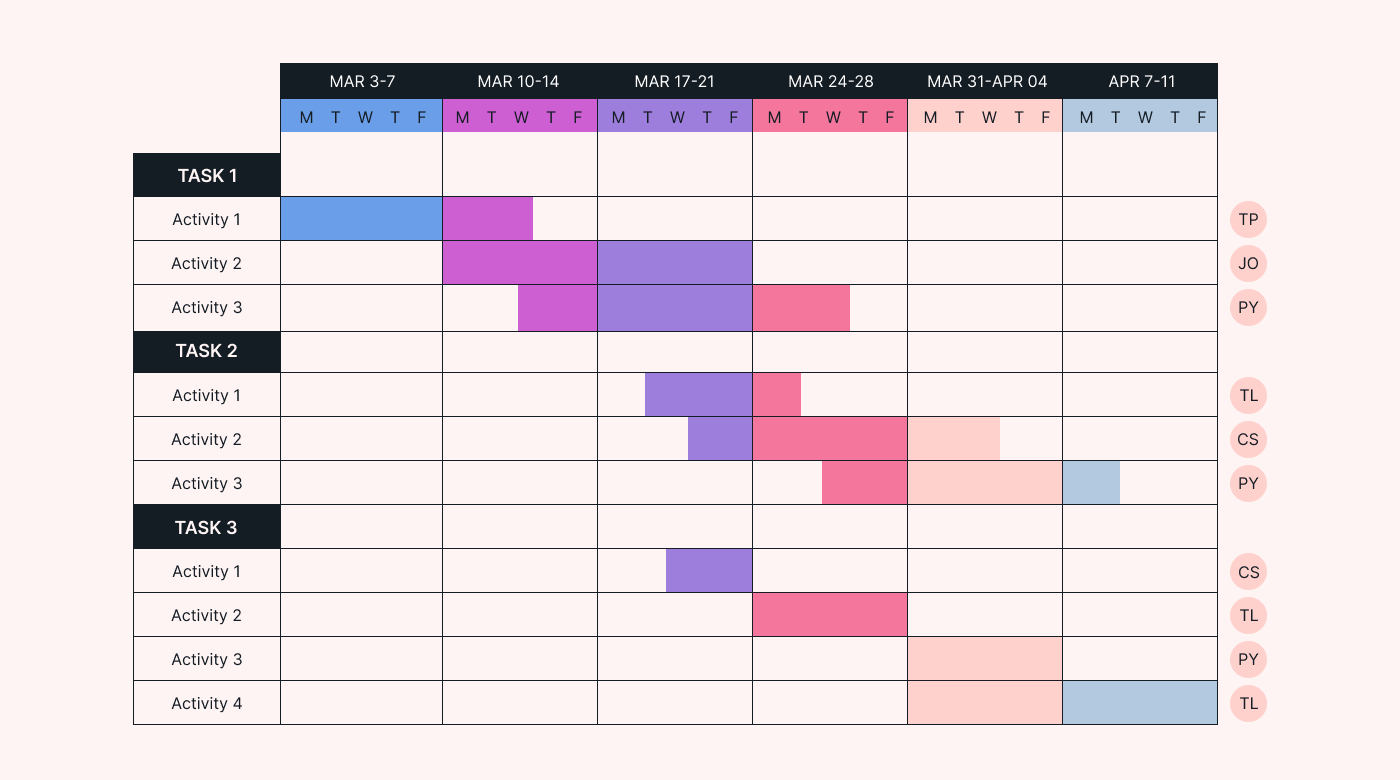 |
Tip: Use visual tools, such as flow charts, Gantt charts, or Work Breakdown Structures (WBSs), to visually represent the scope. These aids simplify complex topics and can pinpoint possible challenges or overlaps early on.
3. Keep everyone in the loop
The rule of thumb is to keep all your project stakeholders informed. When everyone is aware of the project’s progress and any current challenges or changes, there’s less room for misunderstandings or missed opportunities.
Routine check-ins, consistent updates, and regular client status meetings help foster transparency and build trust. When you talk openly and often, you make room for top-notch ideas. Regular updates also allow you to address concerns in real time.
Tip: Establish a communication cadence — how often and in what format updates will be shared. For more efficient communication, use project management tools like Motion to schedule meetings and routine check-ins at times that work best for your stakeholders.
4. Track to stay on track
A big part of project management is knowing where you are, where you’re headed, and how you’ll get there. So, it’s no wonder that 64% of top-performing project teams believe project management maturity is critical.
To improve project management, establish clear project timelines for your tasks to give your work structure and avoid last-minute rushes.
It’s also crucial to identify and monitor key performance indicators. These are your project’s vital signs — those that tell you how healthy the project is and where you might need to step in.
Tracking project health will help you avoid potential pitfalls and increase the project’s chances of succeeding. Motion’s project manager lets you track project health and see everyone’s progress.
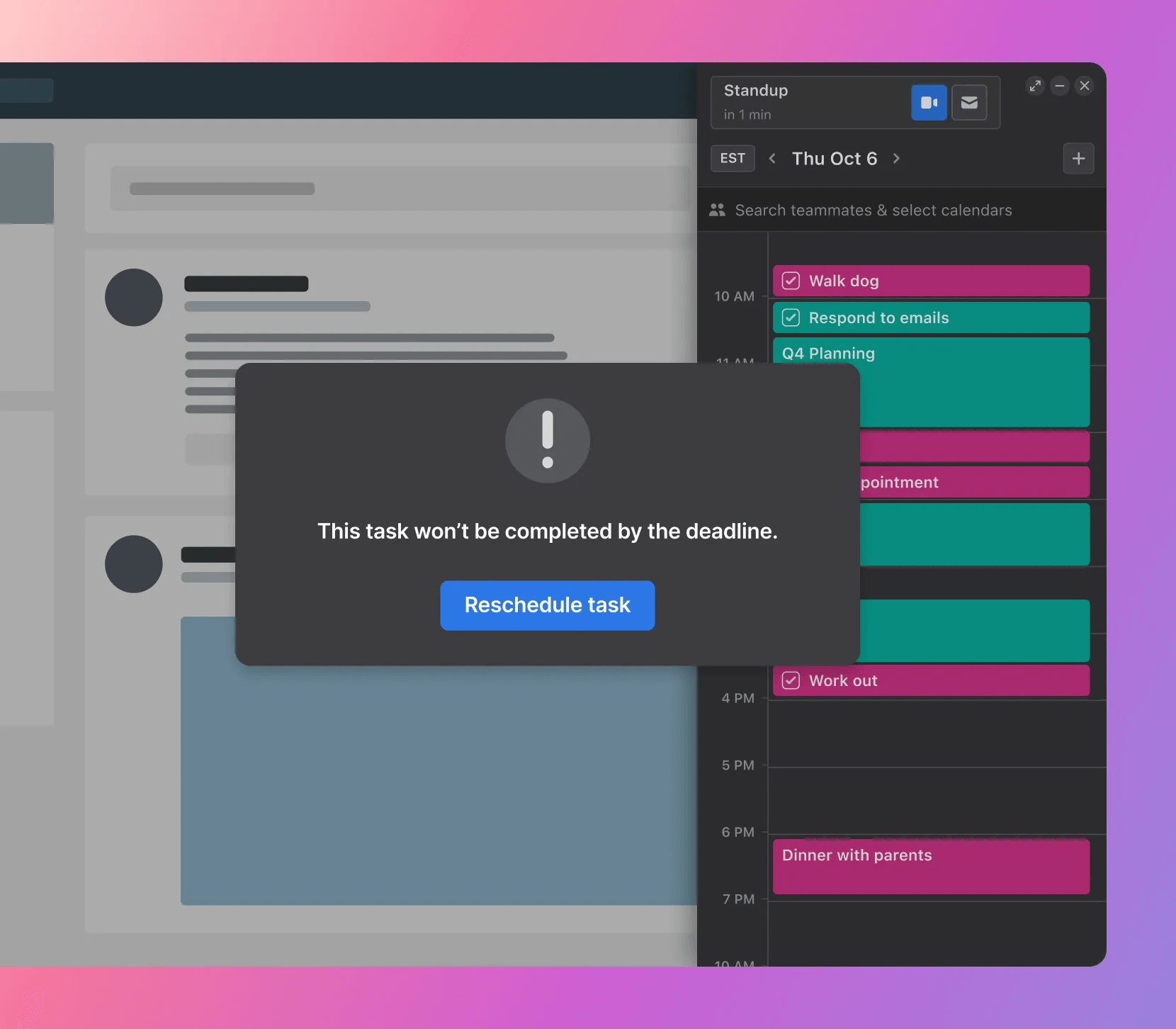 |
Tip: Tracking your project is one part of this, but meeting deadlines is another. Set up deadline alerts to remind you of unfinished, upcoming, or late tasks. Motion can create automated deadline alerts that let you know when a deadline is about to pass.
5. Prioritize important tasks
Knowing what to prioritize and what can wait makes a huge difference in project management. On average, employees dedicate just 4 hours and 42 minutes a day to deep, focused work. So, completing your most important tasks during your most productive times is good practice.
Direct your attention and resources to tasks that align closely with the project goals. You can also break down complicated tasks into manageable, bite-sized steps to help the work feel more achievable.
Assign tasks to team members based on their expertise and capacity. Tools like Motion help you automatially delegate tasks to the most suitable team members.
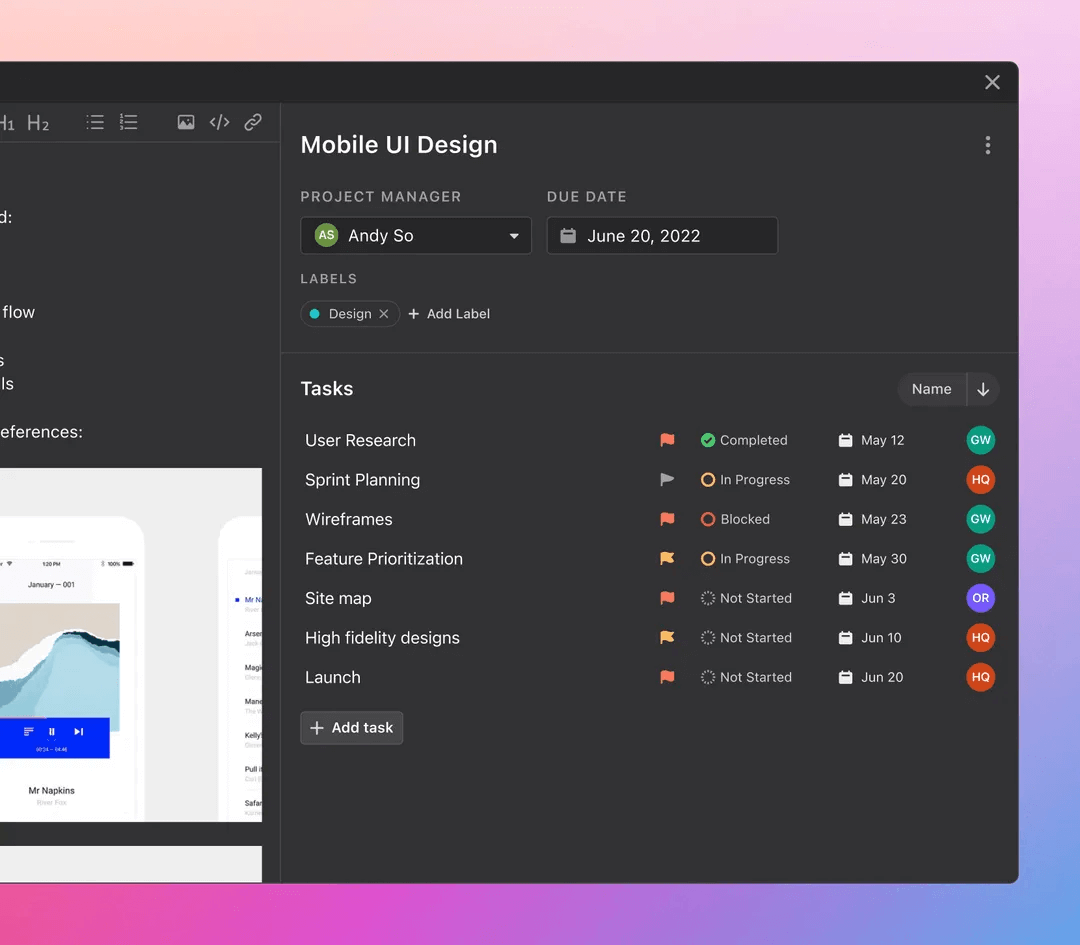 |
Tip: Start your day by tackling the most important tasks first. This will give you the momentum you need to complete the rest of the day’s tasks.
6. Automate repetitive and tedious tasks
The use of AI in the project management industry is expected to experience a 17.3% CAGR from 2023 to 2028. Think about it — how much more could you accomplish if AI automated all your repetitive tasks, such as sending out weekly reminders and filling out routine forms for you?
Automating repetitive tasks means you’ll free up time to do more meaningful work. Templatizing everything is a great place to start, as it standardizes your tasks and provides a consistent framework for future use.
With Motion, you can save projects as reusable templates, making it easier to start similar tasks in the future. Motion also automates monotonous tasks, like meeting scheduling and setting recurring tasks, so that nothing slips through the cracks.
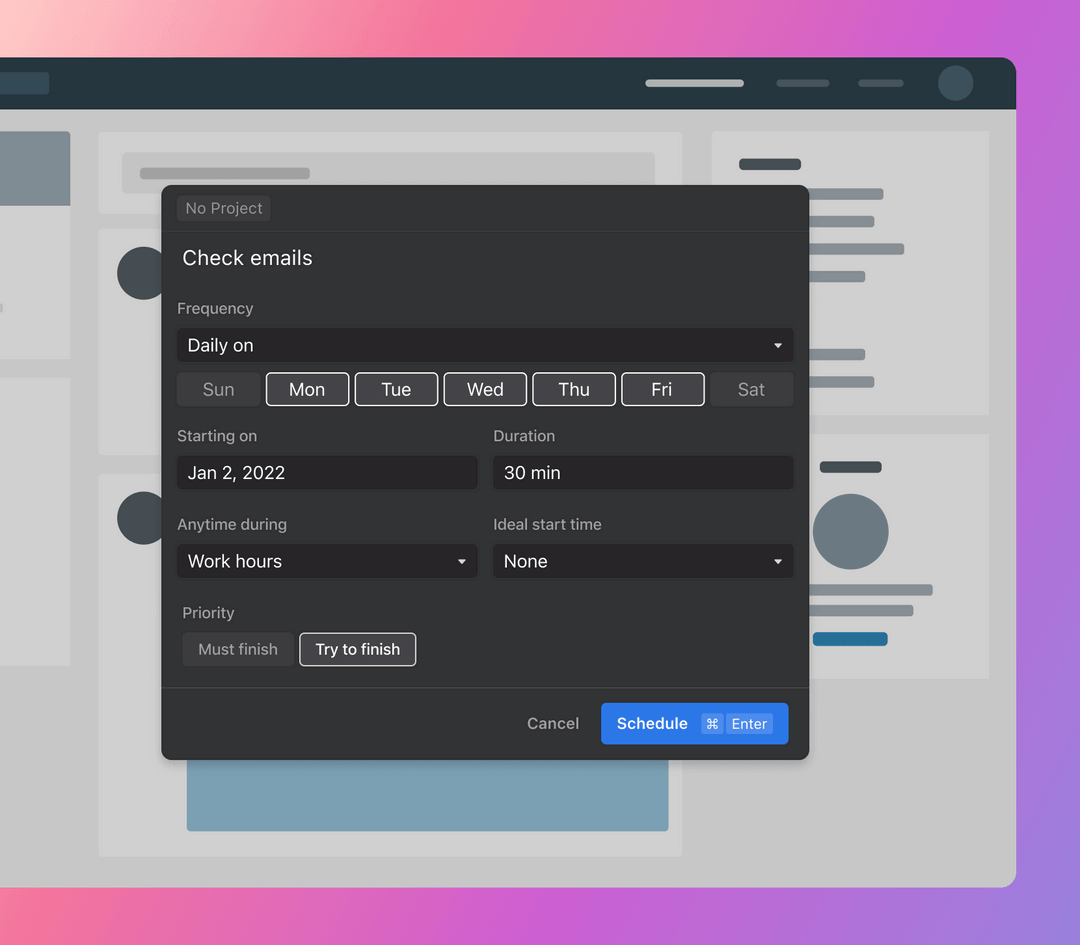 |
Tip: Batch your tasks. In other words, instead of spreading out similar tasks throughout the day or week, complete them one after another. This minimizes the mental load of switching between different types of tasks and increases efficiency.
7. Be ready for risks
As Mohamad ElHelaly, Projects and Operations Director at Concrete Plus, says, “Don’t wait to implement risk management until things go bad.” Having a project risk management plan will help you identify setbacks and costly delays.
Before your project even begins, hold brainstorming sessions with your project team to anticipate potential risks. Once identified, categorize these risks based on their likelihood of occurring and potential impact on the project.
But don’t stop at identifying risks — plan for them, too. Develop strategies that outline how to combat each issue if it does happen. Additionally, set aside a portion of the budget specifically for unexpected risks.
Tip: Appoint a risk officer to stay on top of potential challenges. This designated person or team can continuously monitor and manage risks, ensuring you’re always one step ahead.
8. Optimize your resources effectively
The crux of efficient project management is getting the most out of what you have.
Shockingly, 53% of businesses struggle with not using their resources well. So, before you even hit the starting line of a project, assess everything at your disposal. This means understanding your team’s unique strengths, available tools, and budget limitations.
 |
From there, develop a resource allocation plan. This will help you better understand how to distribute workloads so that no one drowns in theirs.
Keep an eye on how resources are being used, too. For example, if you’re running multiple marketing campaigns, tracking performance can show you which ones deserve more budget and attention. Continue adjusting and refining your resource allocation strategy to ensure that each resource is used to its fullest potential.
Tip: Staying a step ahead always helps. Practice resource forecasting to help you anticipate shortages and make smart decisions in advance. Resource forecasting involves estimating future resource needs based on a project’s scope and comparing them with current availability. By identifying potential shortages early on, teams can allocate resources efficiently and adjust project plans as needed.
9. Document like a detective
Every project detail — even the most seemingly insignificant — should be documented and stored.
Your thoroughness will provide a comprehensive record of the project’s evolution and make fixing mistakes and adjusting to changes significantly easier.
Regular backups and centralized storage, like what Motion’s project management software offers, keep everything consolidated and accessible. Having all documents in one place speeds up information retrieval when tight deadlines loom.
Tip: Maintain a chain of custody to track who touches and modifies project documents. This will establish accountability and protect important information.
10. Gather feedback
Feedback is a bridge to improvement. Keep lines of communication open and encourage your team to voice concerns, provide insights, or ask questions. That way, you can quickly identify areas for improvement, adjust strategies in real time, and ensure everyone is updated as necessary.
Motion facilitates this by allowing direct team communication on project boards. You can get instant feedback and address any problems immediately.
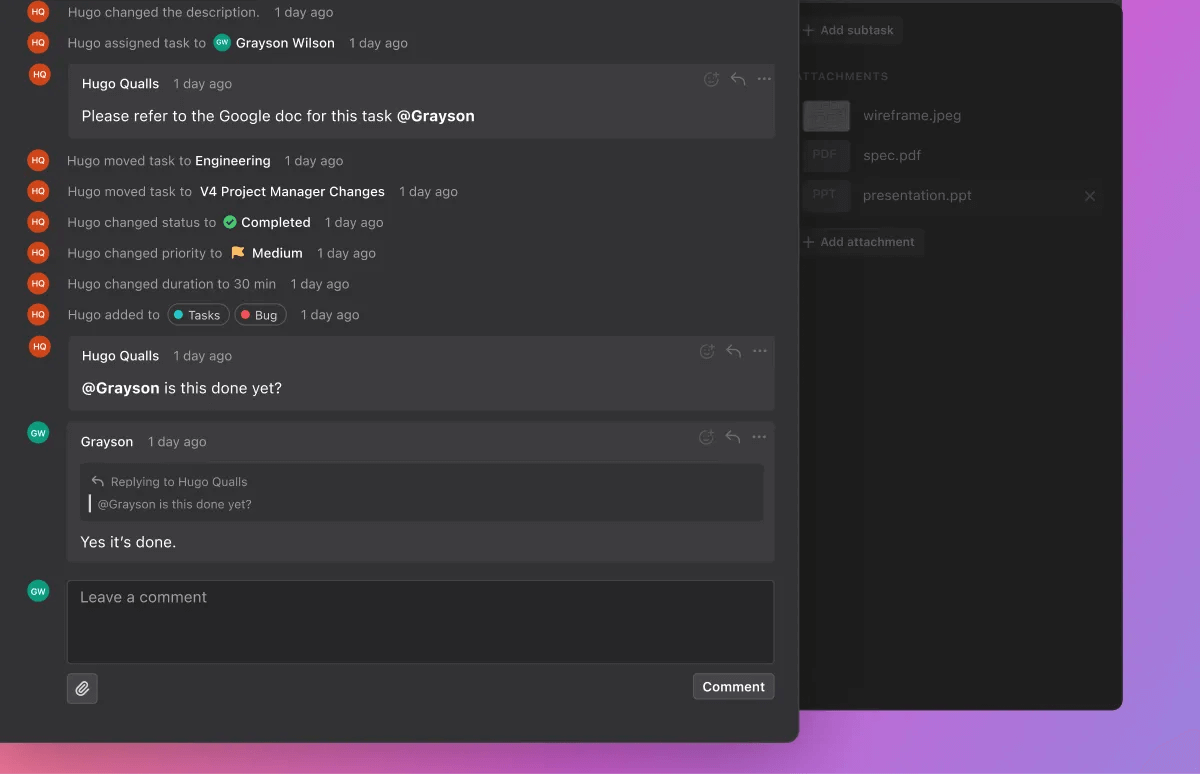 |
Tip: When people feel heard and appreciated, it fuels both their motivation and innovation. Get into the practice of celebrating those who speak up or offer constructive feedback.
Try Motion: The modern way to manage projects
Manage projects with ease with Motion. Our AI-powered platform helps you automate tedious tasks, track project progress and resources, and encourage feedback.
Ready for a project management experience that never goes out of style? Give Motion a try today.





